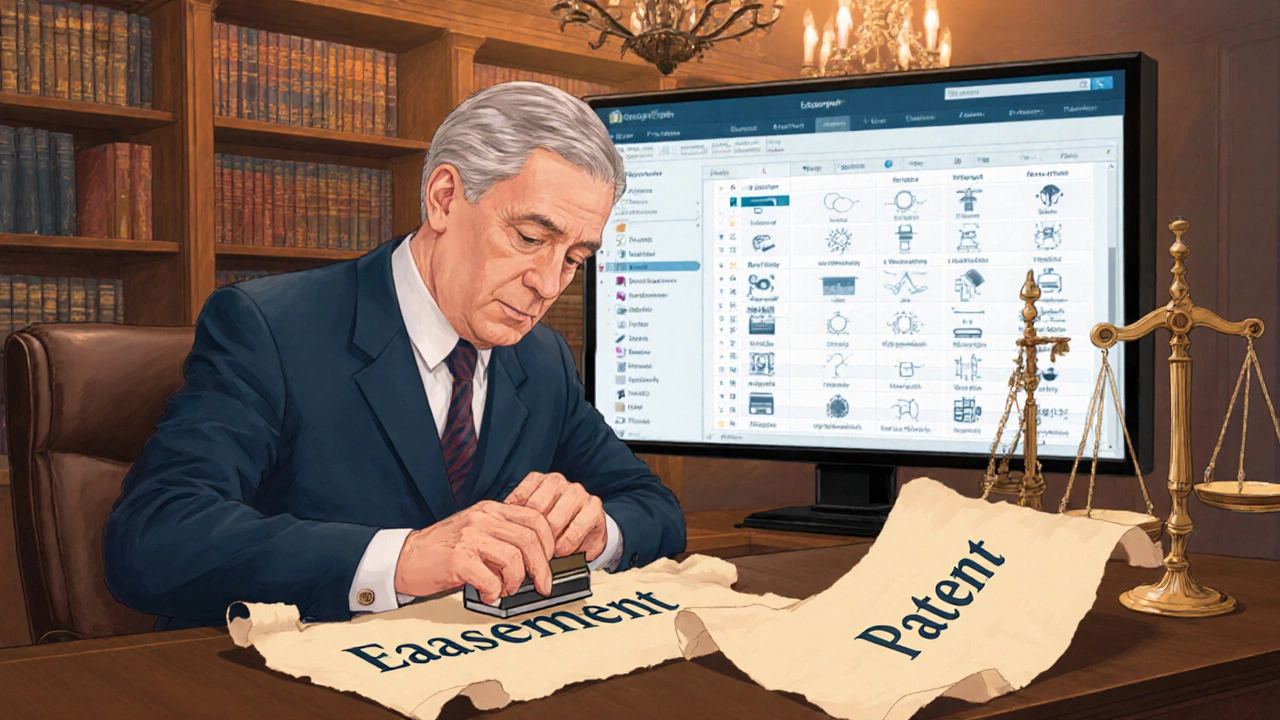Understanding Non Property: Definition, Types, and Legal Implications

Oct, 8 2025
Non-Property Asset Identifier
Classification Result
Asset Categories Overview
Real Property
Land and buildings that cannot be moved. Includes houses, farms, and commercial structures.
Personal Property
Movable items, both tangible and intangible. Includes cars, furniture, and patents.
Non-Property
Rights or interests that don't fit real or personal property categories. Includes licenses, easements, and digital rights.
Key Takeaways
- Non property describes assets that fall outside the traditional categories of real and personal property.
- Legal systems treat non property differently, especially regarding registration and taxation.
- Common examples include intellectual assets, digital rights, and certain public easements.
- Understanding the distinctions helps avoid disputes and unexpected tax bills.
- A short checklist at the end helps you verify compliance when dealing with non‑property assets.
The term non property refers to assets that are not classified as either real property (land and buildings) or personal property (movable items). While the phrase sounds technical, it pops up in everyday situations-think of a software license you own or a public right‑of‑way that runs through your backyard.
When you first encounter the concept, it helps to see it side‑by‑side with the more familiar categories. Below is a quick snapshot:
| Attribute | Real Property | Personal Property | Non Property |
|---|---|---|---|
| Legal definition | Immovable land or structures attached to it | Movable items, both tangible and intangible | Assets that do not fit the first two categories |
| Typical examples | House, commercial building, farmland | Car, furniture, patents | Software licenses, easements, public utility rights |
| Registration requirement | Usually mandatory at a land registry | Often none, sometimes with a title document | Varies; many are recorded in specialized registries or not at all |
| Tax treatment | Property tax, capital gains tax on sale | Sales tax, income tax on income generated | Specific levies (e.g., digital services tax) or exemption |
Defining Non Property
Non property is an asset class that falls outside the traditional legal definitions of real and personal property. In most common law jurisdictions, the law draws a clear line: real property attaches to land, personal property can be moved, and everything else lands in the non‑property bucket.
This category often includes rights that are intangible but enforceable-like the right to use a public water main that runs under private land, or the exclusive license to a piece of software. Because the assets are not tied to a physical location, the ways governments track and tax them differ markedly.

Legal Framework and Registration
Legal recognition of non property varies by jurisdiction. Some countries have a dedicated Land registry that also records easements, utility corridors, and other non‑property rights. Others rely on separate registries for intellectual property, such as a patent office, or simply on contract law to enforce rights.
When a non‑property asset is registered, the entry typically includes:
- The description of the right or interest.
- The parties involved (owner, holder, or beneficiary).
- Geographic scope, if any (e.g., a right‑of‑way across a specific parcel).
- The duration or expiry conditions.
Understanding whether registration is mandatory helps you avoid a situation where an unregistered easement later causes a costly dispute.
Tax Implications
Tax authorities treat non property differently from land or movable goods. A Taxation regime for non‑property assets typically focuses on the income they generate rather than a regular property tax.
For example, a software license that you sell to a client is subject to sales tax in many jurisdictions, but you won't see a yearly land‑tax bill for it. Conversely, a public utility easement might be exempt from property tax because it doesn't convey ownership of land.
When planning investments, ask yourself:
- Will the asset generate taxable income?
- Is there a specific levy (like a digital services tax) that applies?
- Do I need to file any special declarations to avoid penalties?
Common Real‑World Examples
Seeing non‑property assets in action makes the concept clearer. Here are a few scenarios you might encounter:
- Software license: You purchase a perpetual license for a design tool. The license grants you the right to use the software, but you don't own any physical medium.
- Easement: A municipality has the right to run a storm‑drain pipe beneath your garden. You retain ownership of the land, but you can't build a structure where the pipe runs.
- Broadcast frequency: A radio station holds a license to broadcast on a specific frequency. The frequency itself isn’t land or a tangible object, yet it’s a valuable asset.
- Patent: An inventor holds exclusive rights to a manufacturing process. The patent can be bought, sold, or licensed, but it isn't a piece of equipment.
Risks and Common Pitfalls
Because non‑property assets sit outside the usual property framework, they can catch owners off guard. Here are the top pitfalls to watch for:
- Assuming no registration needed: Some easements require formal recording; skipping this step can lead to loss of the right.
- Overlooking tax obligations: Digital assets often trigger specific taxes that owners forget to declare.
- Mixing up ownership and usage rights: A software subscription gives you usage rights, not ownership; canceling the subscription can cause sudden loss of access.
- Failing to include non‑property assets in estate planning: Because they aren't listed on a title deed, they can be omitted from wills, leading to inheritance disputes.
Quick Compliance Checklist
- Identify whether the asset is real, personal, or non property.
- Check if a specific registry (land, patent, utility) requires formal recording.
- Determine applicable taxes-sales, income, or special levies.
- Document ownership and usage rights clearly in contracts.
- Include the asset in estate planning and insurance policies.
Frequently Asked Questions
What exactly qualifies as non property?
Any asset that is neither immovable land/building (real property) nor a movable item (personal property). This includes rights like easements, software licenses, patents, and broadcast frequencies.
Do I need to register a non‑property right?
Registration requirements differ by type and jurisdiction. Easements often need to be recorded with a land registry, while patents are filed with a national intellectual‑property office. Always verify local rules.
How are non‑property assets taxed?
Taxes usually target the income the asset generates. For instance, licensing fees are subject to income tax, while digital services may attract specific levies. Property tax generally does not apply.
Can non‑property rights be transferred?
Yes. Rights like patents, licenses, and easements can be assigned or licensed to another party, provided the original agreement permits it and any required registrations are updated.
What happens if I ignore a non‑property obligation?
Ignoring obligations such as an easement can lead to legal action, fines, or forced removal of structures that infringe on the right. It can also trigger tax penalties if related income isn’t reported.